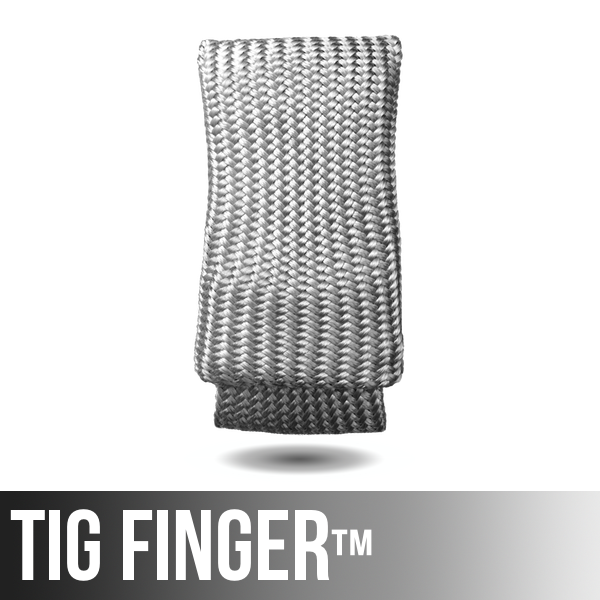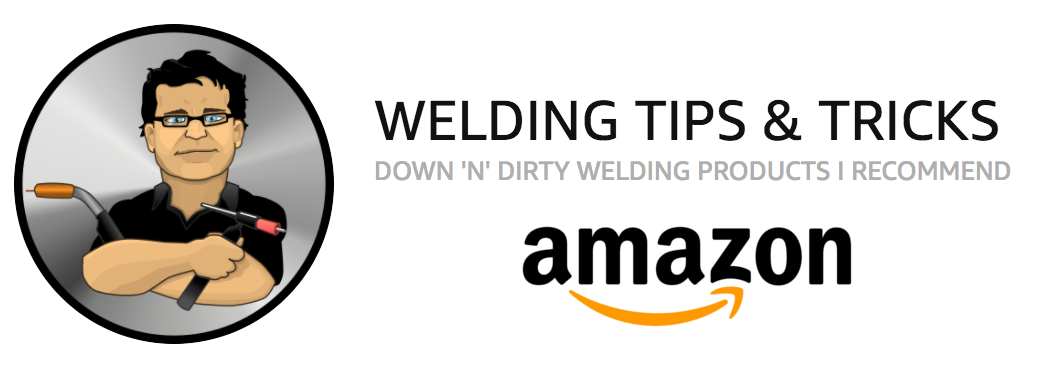Video Transcript:
Stainless Steel Tips – Part 2: Pulse Settings and Purge Tips
This is a continuation of TIG welding stainless steel video. Okay, this is part two. I’m still TIG welding that stainless steel manifold. In this video I’m going to weld the threaded nipples on and I’m going to weld the end caps on. That brings me into welding with some pulse settings for those threaded nipples and some purging for the end caps because I can’t get backing on the inside of those and they need to be shielded somehow. I’m going to talk about purging and pulsing. We’ll do a little bit of plasma cam cutting for some brackets on this thing, should be a fun video. All right? Let’s dive in.
First off, a quick 30 second recap of part one. I was using this little CK Worldwide MT 200 machine. I set it at 200 to get quick burst tacks. I like to do that on outside corner joints, like to really quick burst tack, sometimes with filler, sometimes without. I used aluminum backing and aluminum chill bars extensively and then set the amperage to 100 amps and welding with straight DC current. Trying to keep my travel speed up, keep the heat down a little bit as much as I could and it came out pretty good with very minimal distortion because those chill blocks just did some magic on this thing.
This is a deburring tool, it’s good for poking a hole in your palm. It also deburs. I’m going to debur all these nipples on the inside using that. It’s a really quick way to debur something like that but you do have to be careful, you can jab a hole in your hand. We’ll debur all those nipples and then we’ll tack weld them on. I’m using this little three jaw chuck key because I didn’t have piece of round stock the right diameter. I put some aluminum tape on it to kind of bush it up a little bit and keep from possibly contaminating the stainless with carbon steel. I just went to town tacking stuff on. I won’t make you watch all that, but it all went together something like that. I got them all tacked, and now they’re ready to weld.
I’m going to use a piece of this heavy, aluminum angle for backing on all those things and I’m going to keep clamps on it really tight because with all that welding this thing has a potential to look like a banana when I’m done, and I don’t want that. You can see, I’ve got the aluminum backed up there good and tight. I’m still at 100 amps, using straight DC current, I’ll switch over to pulse here in just a minute. I didn’t really know that I was going to do that necessarily but I wasn’t crazy about the way that it was going at 100 amps, kind of slow and I don’t know, it just didn’t do it for me so I thought, “You know what?” “If I lay the wire in there and pulse right over it, I bet you that will work better.” That’s what I tried.
I’m probably at one pulse a second roughly. This little pulse knob, since it’s a dial knob here, it’s pretty sensitive. You can get it dialed in on a piece of scrap pretty quickly. I went all the way down to 20% on the background amps, about one pulse a second. I think on this machine the pulse current is fixed probably at 40% to 50%. At first, I went ahead and went up to 150 amps, you always have to go a little hotter when you pulse. These are my pulse settings. You can hear it just hammering when it pulses, it’s a real crisp pulse. You can really get that quick of a pulse with a foot pedal if you’re pulsing with a foot pedal. You see how much the travel speed has increase, I mean crazy. That’s one of the factors of heat input is travel speed. One of the big determining factors, and that was a little hot so I dropped it down to 130 amps for the next one and that actually wound up being probably a little bit hot too but you can see it’s jumping from 127 all the way down 20 amps, that’s what pulse does at one time per second.
I got it a little bit better now, not really too hot. See, I’m just walking over the wire. Each time it pulses, I step up to where the wire meets the puddle and it kind of puts the fairly even little ripple pattern in there. It just makes this joint easier and quicker. I don’t know, I need more practice at it but man, I could see some real benefits here. I went ahead and welded all those out. I could only go halfway around each one just because there’s always something in the way with me having tacked them all up beforehand. Quick visual inspection to make sure there’s no little crater dots, or fish eyes or anything. That about wrapped that up.
Now it’s time to put the large size nipple on there. You’ll see when I tack this thing that it draws right up. I’ve got to kind of tap it back down but I don’t want to tap it back down all the way because the second tack is going to draw a little bit too. I did the same thing here, just walked right over that 1/16th, 1.6 millimeter wire. I taped some wire on here just to keep that thing from falling down in there, got tacks on the corner. I got those end caps all taped up because I’m purging now to get those end caps purged, I can’t use aluminum backing on the inside anymore.
We’re going to talk a little bit about purging here, some of the basics of purging. Now, it is possible to use kind of a splitter ‘y’ off one flow meter. It’s best to have either a dual flow meter regulator or just use a whole separate bottle of argon. I’ve got several bottles of argon so I’m using a separate bottle today. I’ve got it set to 10 CFH, it’s really all I need on this. I’m poking some vent holes all around the edges of this little inlet here, and the reason on the edges and not the center is as I move the part around I want a vent hole always at the very top.
Purging is displacing the oxygen from the backside of the weld so that the molten metal won’t oxidize. Argon is usually used, occasionally nitrogen is used, argon is the most common purge gas. It helps very much to think of it as filling a container with water. Argon is heavier than air so it generally fills an odd shape just like water would so you have these areas where water could get trapped if you don’t have a vent hole to allow the water or argon to displace the oxygen.
If this were argon here, this would be air and oxygen here. Unlike the water, which is just kind of there, this little area would be swirling and mixing in a little oxygen in with the argon and you wouldn’t get a great purge. That’s why you need a little vent hole at any high point like this so it might trap air. That allows the argon, which is heavier than air to fill it up just like water. Then you can get a good purge.
Notice I’ve got these copper third hands on here to transfer a ground and I’ve got a vent hole cut in the aluminum tape there at the high point and that joint can be welded now and purged. Now, this is a different joint here, and I’ve got holes poked in the tape of each one of those nipples because they are now the high point where oxygen could be trapped. With a hole poked in there it will allow the argon to displace all the air out of there just like the water demonstration earlier.
When you’re purging a part like this, if you’ve got little protrusions like these nipples, you’ve got to be mindful when you reposition the part, where your high points are. You’ve got to always have a vent at the high point. I like to use a little ‘x’ slot a lot of times on this because it prevents you from having a weld blow out when you seal everything up, when you make that last weld. Poof. You see it open up just a little bit there? It stays shut while you don’t need much of a vent and then when you close up a weld it’ll open up and kind of save you some heartache sometimes.
All right, well that is the part finished or I would say just about finished because there’s a couple little brackets that need to be put on there to mount it in the factory where it goes. We’re about to cut those on the plasma cam. Just really simple brackets out of sheet metal, stainless sheet metal. This is the new area where the plasma cam is. It’s kind of a temporary setup right now. This is JD’s new location. He will wall all that up and make it a little bit nicer but it’s up and running, and making parts now.
Very simple little brackets, the little line there, the vertical line is just to make it really easy to bend over. Little ‘l’ in the bracket. They’re thinner than the material on the manifold, which is I think by design so that they’re able to flex a little bit for installation. You can make up an eighth of an inch or quarter inch, no problem on site. There’s two of these little things, I’ll speed it up here now. Very simple little part here but it wouldn’t be nearly as simple if you didn’t have a plasma cam. Anybody that’s got a plasma cam like this needs an ice pick, I duress the ice pick. JD and I both have one, kind of wanted to support Jimmy but come to find out they’re really handy things to have especially for stuff like this just picking up hot parts, things like that.
Aluminum backing once again, and this really helps to not only line it up but to weld one side out with the backing on there. That second side goes a lot better because its minimal oxidation. You don’t have to get in there with a grinding wheel, or whatever, and clean up the oxidation. The second side goes almost as good as the first side if you weld it with good backing on it.
This is the current manifold in service right now. They’re wanting to have the new one ready when they pull this line down for maintenance. Well, this video is brought to you by my online store at weldmonger.com. Here’s a quick little preview of some of the products that i have for sale over there. I appreciate your support. Thanks for watching, we see you next time.







Leave a Reply